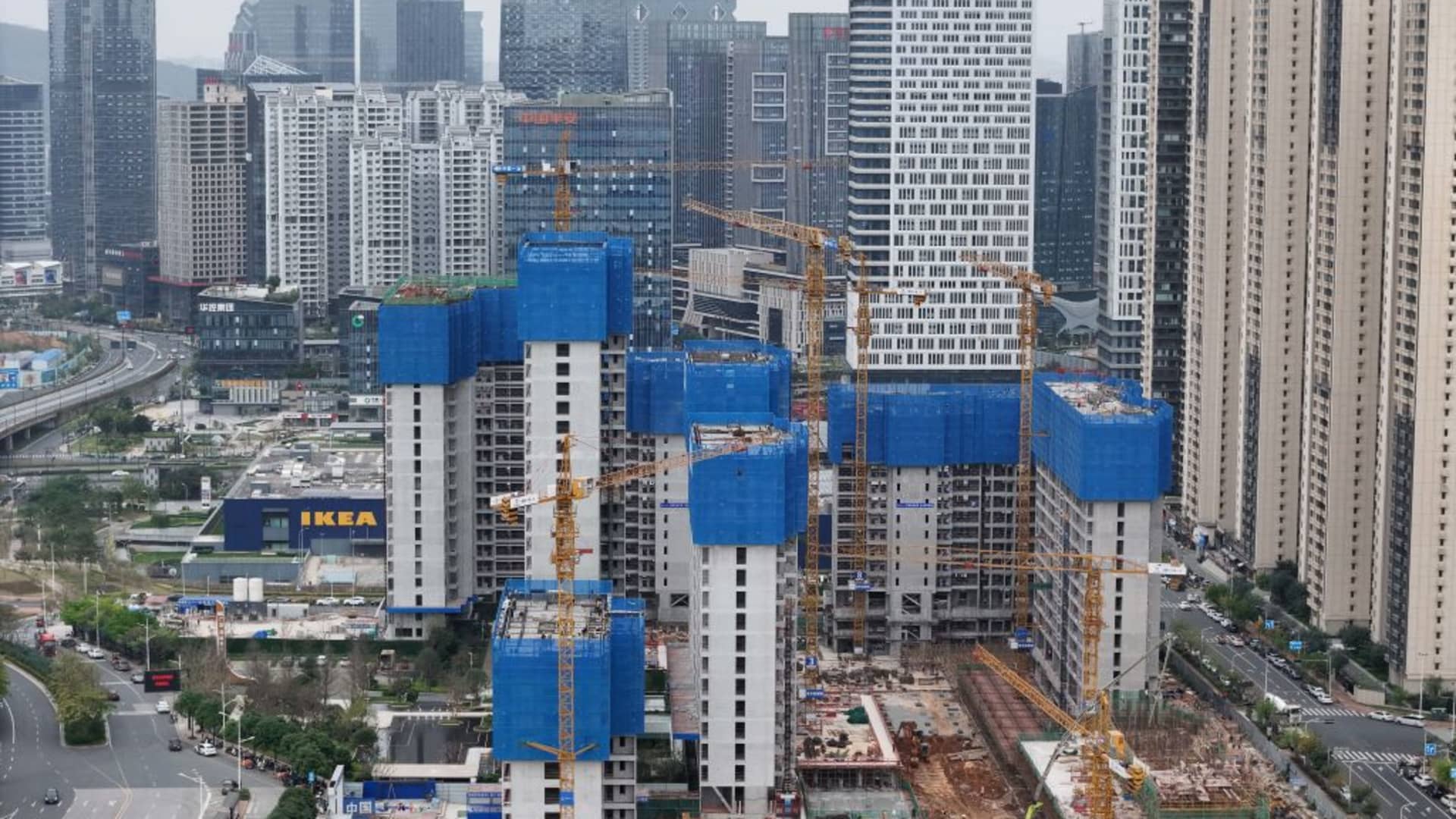Pictured here is a commercial residential property under construction on March 20, 2024, in Nanning, capital of the Guangxi Zhuang autonomous region in south China.Future Publishing | Future Publishing | Getty ImagesBEIJING — China’s fiscal stimulus is losing its effectiveness and is more of a strategy to buy time for industrial and consumption policies, S&P Global Ratings senior analyst Yunbang Xu said in a report Thursday.The analysis used growth in government spending to measure fiscal stimulus.”In our view, fiscal stimulus is a buy-time strategy that could have some longer-term benefits, if projects are focused on reviving consumption or industrial upgrades that increase value-add,” Xu said.China has set a target of around 5% GDP growth this year, a goal many analysts have said is ambitious given the level of announced stimulus. The head of the top economic planning agency said in March that China would “strengthen macroeconomic policies” and increase coordination among fiscal, monetary, employment, industrial and regional policies.High debt levels limit how much fiscal stimulus a local government can undertake, regardless of whether a city is considered a high or low-income region, the S&P report said.Public debt as a share of GDP can range from around 20% for the high-income city of Shenzhen, to 140% for the far smaller, low-income city of Bazhong in southwestern Sichuan province, the report said.”Given fiscal constraints and diminishing effectiveness, we expect local governments will focus on reducing red tape and taking other measures to improve business environments and support long-term growth and living standards,” S&P’s Xu said.”Investment is less effective amid [the] drastic property sector slowdown,” Xu added.Fixed asset investment for the year so far picked up pace in March versus the first two months of the year, thanks to an acceleration of investment in manufacturing, according to official data released this week. Investment in infrastructure slowed its growth, …
Article Attribution | Read More at Article Source
[mwai_chat context=”Let’s have a discussion about this article:nnPictured here is a commercial residential property under construction on March 20, 2024, in Nanning, capital of the Guangxi Zhuang autonomous region in south China.Future Publishing | Future Publishing | Getty ImagesBEIJING — China’s fiscal stimulus is losing its effectiveness and is more of a strategy to buy time for industrial and consumption policies, S&P Global Ratings senior analyst Yunbang Xu said in a report Thursday.The analysis used growth in government spending to measure fiscal stimulus.”In our view, fiscal stimulus is a buy-time strategy that could have some longer-term benefits, if projects are focused on reviving consumption or industrial upgrades that increase value-add,” Xu said.China has set a target of around 5% GDP growth this year, a goal many analysts have said is ambitious given the level of announced stimulus. The head of the top economic planning agency said in March that China would “strengthen macroeconomic policies” and increase coordination among fiscal, monetary, employment, industrial and regional policies.High debt levels limit how much fiscal stimulus a local government can undertake, regardless of whether a city is considered a high or low-income region, the S&P report said.Public debt as a share of GDP can range from around 20% for the high-income city of Shenzhen, to 140% for the far smaller, low-income city of Bazhong in southwestern Sichuan province, the report said.”Given fiscal constraints and diminishing effectiveness, we expect local governments will focus on reducing red tape and taking other measures to improve business environments and support long-term growth and living standards,” S&P’s Xu said.”Investment is less effective amid [the] drastic property sector slowdown,” Xu added.Fixed asset investment for the year so far picked up pace in March versus the first two months of the year, thanks to an acceleration of investment in manufacturing, according to official data released this week. Investment in infrastructure slowed its growth, …nnDiscussion:nn” ai_name=”RocketNews AI: ” start_sentence=”Can I tell you more about this article?” text_input_placeholder=”Type ‘Yes'”]

